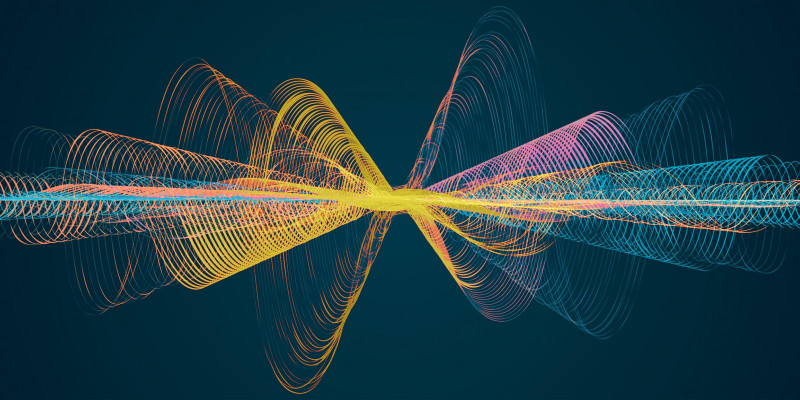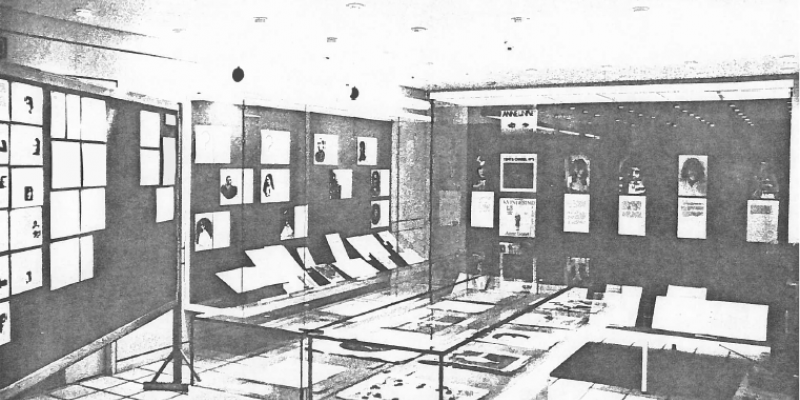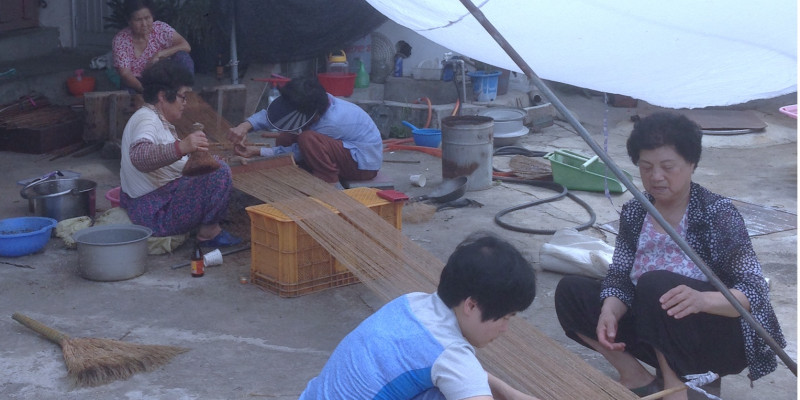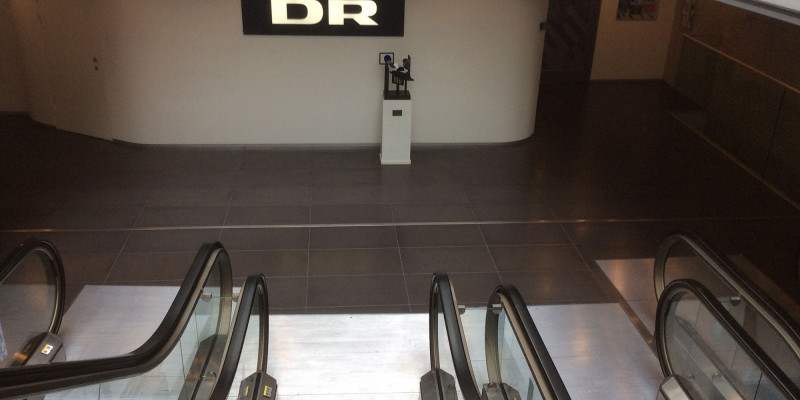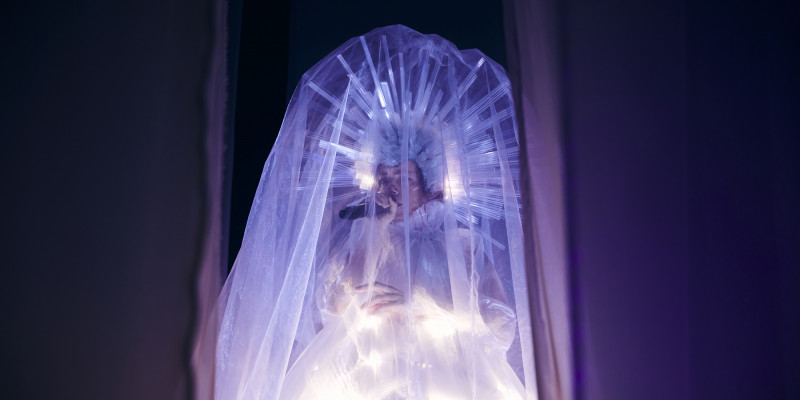Perspectives on sounding women’s work
»You look like 50% of the world's population, but are professionalised as a minority«
There are plenty of numbers today that show that composers, musicians and sound artists who identify as women are in the minority when it comes to representation on stages, festivals, museums, in academic research and music education as composer Juliana Hodkinson's so adequately condense in the quote above, which is an excerpt from her essay to the Seismograf Focus titled Sounding Women’s Work I that was published in March 2022.
Gender biases and unequal representations affecting professionals identifying as women in a Danish context have for the past decade been well documented in several surveys initiated by Danish music institutions and trade associations (e.g. Koda 2020; Dansk Live 2018; DMF et al. 2017; DMF et al. 2012), something that recently has been underpinned by more qualitative studies (KVINFO 2022; DR and Bandcamp 2022). Additionally within the past few years various Danish composers and musicians identifying as women have publicly told of an industry that is characterized by experiences of sexism, ageism and lack of diversity. But even though there is an increased focus on gender and representation in the sound art and music industry, the experience of gendered expectations, and how these permeate everything from work practices to infrastructures in the sound art and music life, is still an under-illuminated research field.
Internationally, musicological research on gender and the music industry has increased within the past years. Various international studies have shown that people who identify as women face inequality in almost every area of the industry and in some specific areas are almost completely excluded (see also Strong and Raine 2017): Studies of local music life have pointed out how women lack access to spaces associated with music (Björck 2013), find it harder to get access to information and networks (Leonard 2016), are met with sexist attitudes and assumptions that they cannot play instruments or use technology (Clawson 1999), are particularly under-represented as performers in genres and scenes (Berkers and Schaap 2018; Farrugia 2012; Gadir 2017; Hill 2016), just as they have been marginalized through mechanisms of taste-making and archiving, which has created canons and histories that primarily focus on men (Reddington 2007; Schmutz and Faulpel 2010; Strong 2011). Data on inequality from a more commercial perspective, moreover show that people identifying as women are earning less in royalties (Strong and Cannizzo 2017), played less on radio (McCormack 2017), under-represented in the charts (Lafrance et al. 2011), de-emphasized in Spotify playlists (Pelly 2018), more likely to have shorter careers (Lieb 2018) and are fewer in number in the key decision-making positions in the industry (McCormack 2017; DMF et al. 2017). And from a music educational perspective, it is stressed how structural issues in education and education policies have an impact on who ends up with the skills to succeed in these industries (Born and Devine 2015; de Boise 2017).
While musicological research on gender and the music industry has gained international attention in recent years, very little research has been undertaken in this area within a Danish context. With this special issue at Seismograf Peer we want to offer a small corrective to this gap. The special issue is a continuation of the Focus on Sounding Women’s Work I that as mentioned was published earlier this year (2022). Together they present five peer-reviewed academic articles and audio papers, and an enquete with twelve essays from artists in the field of experimental music and sound art examining, discussing and exploring ‘women’s work’ in terms of gendered expectations, infrastructures, technologies, working conditions, artistic work and the gendered aspects of Danish music and art life in depth. 'Women's work' or 'women' is a commonly used term to signal a gender division of labor and especially the type of work that is often invisible and underestimated. In the context of this Focus and Peer, we would like to suggest to the reader that people who identify themselves as women sound artists and musicians are (still) in our historical contemporaries facing professional barriers, discrimination and lack of recognition. Our argument is that the above mentioned studies, surveys and discussions indicate that the infrastructure of music production as well as reception are active relational forms of exercise of power that regulate access and availability, and that these are highly gendered processes. A key feature of infrastructure is that it creates smooth flows and connectivity for some, while producing barriers and exclusion for others (Graham and Marvin 2001). Following, an infrastructural attention moves analytical focus from the individual’s skills, talent and productions to its embeddedness in social, economic and historical ecologies.
With queer feminist Judith Butler, we do not think of gender as an objective natural thing that one has automatically, it is not a being. Gender is performative, and is »real only to the extent that it is performed« (1988, p. 527), as Butler argues. Gender, is not tied to material bodily facts but is a social construction that, therefore, is open to change and contestation: »Because there is neither an 'essence' that gender expresses or externalizes nor an objective ideal to which gender aspires; because gender is not a fact, the various acts of gender creates the idea of gender, and without those acts, there would be no gender at all.« (1988, p. 522). Butler points out how sex is not »a bodily given on which the construct of gender is artificially imposed, but... a cultural norm which governs the materialization of bodies« (1993, p. 2-3). Thus, when we use the word 'woman', we are not operating with a biological fundamentalism in relation to the understanding of gender. We are not interested in a conflation of sex, gender, and sexuality – what Butler called the heterosexual matrix, defined as »a hegemonic discursive/epistemological model of gender intelligibility that assumes that for bodies to cohere and make sense there must be a stable sex expressed through a stable gender (masculine expresses male, feminine expresses female) that is oppositionally and hierarchically defined through the compulsory practice of heterosexuality’« (1990, p. 151). We see gender and here especially 'woman' as a 'messy' category, which refers to anyone who in their socio-cultural gender identity formation identifies as a woman, which can also be trans and minority gender. People who identify as women come in all shapes and sizes. Or as queer feminist scholar Sara Ahmed points out: »No feminism worthy of its name would use the sexist idea ‘women born women’ to create the edges of feminist community, to render trans women into ‘not women’, or ‘not born women’, or into men. No one is born a woman; it is an assignment (not just a sign, but also a task or an imperative [...]) that can shape us; make us; and break us« (Ahmed 2017, p. 14).
Our focus on gender expectations, infrastructures and technologies in this particular case depends on what the feminist and cultural theorist Gayatri Chakravorty Spivak has conceptualized as 'strategic essentialism', that is, a political strategy in which a (minority) group temporarily assembled and identified as a unit despite differences between them; or as she puts it herself »[...] a strategic use of positivist essentialism in a scrupulously visible political interest« (Spivak 1996, p. 214). The purpose is to be able to speak on behalf of a common 'we' and thereby make visible and over time the oppressive structures, such as sexism, gender inequality and gendered expectations, that this 'we' is confronted with. This is the starting point for our Focus where we create a place and a responsiveness to the important testimonies and reflections from artists that primarily identify as women and for our Peer asking scholars to reflect and critically think about infrastructures, technologies and gendered expectations. In that sense, as editors, we are pursuing a critical feminist thinking that problematizes the existing structures in our desire to make visible some of the ways in which the infrastructure of music life is gendered, while at the same time highlighting the diversity of composers, musicians and sound artists who identify as women.
»I also do not know what inner world I would have had if I had not had asthma or seen twice until I was 10«
Perspectives
»My work is shaped by my story of who I am. The body I was born with is without a doubt a big part of it. I do not know what experiences I would have had if I had grown up as a boy. I also do not know what inner world I would have had if I had not had asthma or seen twice until I was 10.«
The quote from composer Mette Nielsen’s Focus essay makes an important point. We all create work and experience the world from a particular body, localized and situated in a specific place and time. As the feminist scholar Donna Haraway argues, our experience is situated and therefore our knowledge about the world is situated. Situated knowledge is based on our partial and located experiences with a »view from a body, always a complex, contradictory, structuring and structured body« instead of »the view from above, from nowhere, from simplicity« (1988, p. 589). Sounding Women’s Work aims to present the situated and particular reflections and experiences of being a composer, musicians and sound artist body belonging to a woman or otherwise.
In a historical perspective, womens’ artistic work has been negotiating different expectations, cultural memories, and work conditions. The work has been expressed through different aesthetic strategies, and had work practices and different political motivations. Nonetheless this special issue of Seismograf combining curated contributions in the enquete, with academic audio papers and articles, has inspired us to suggest a number of perspectives across different aesthetics, work practices, motivations and life conditions. We do this in part to understand some of the diachronic tendencies as well as historical developments entangled in political issues and realities that are of concern for those who identify as women composers, musicians and artists. In the gathered contributions to the special issue, we have identified three different yet interrelated perspectives: Gendered expectations, role models and cultural memory, and bodies in work conditions and practices.
»My gender is not. My body is not. My gender means. My body means«
Gendered expectations
When we move into the minefield that gendered work is today, it is to make structures visible and challenge the normative gender expectations. The queer theorist Sara Ahmed writes that bodies are oriented and delimited by places. In this way, the places become the framework for bodily meetings and actions and set the agenda for which bodies can - can mean, act and be seen – and which can not (Ahmed 2006). In artist Nanna Lysholt Hansen’s audio essay, she reflects upon how her body is situated, contextual and reflected by the way others perceive her body. She reflects upon how her body is orientated in space and by space, here thinking space as the “field of action” (Ahmed 2006, p. 65) where bodily encounters occur. What can gender and bodies do within the places where sound art and experimental music are practiced and navigated in? Do they have to have a value and a weight? Can they do as they please? Do they have to mean a similarity and a difference? What is the significance of gender? As composer and musician Jomi Massage writes in her essay for this Focus:
»My gender is not. My body is not. My gender means. My body means. My gender does not matter. My body does not mean. My gender is. My body is. The mind. What creeps in, one day asked me to stop and find my opposite and through these find my own gender in my music. The sex that is enough in itself. The sex that speaks without resistance, about resistance, in resistance.«
In Katrine Wallevik’s ethnographic based Peer article on how gender/ing practices mattered in the popular music mainstream channel P3´s organization of music production in the mid 2010s, questions of women’s agency, here as radio hosts, is also up for critical discussion. Focusing on particularly the young woman host Kirsten, Wallevik points out how Kirsten in the daily routines of producing radio music programs felt that she emerged primarily as a female body and secondary as a learning professional radio host in certain settings. As Wallevik based on her ethnographic material critically argues: »It seemed to be a commonly accepted pattern of behavior when the (male) listeners and colleagues gave sexist, gender stereotyping and sometimes ‘deeply gross and hurting’ feedback to the female employees in the corporation. Furthermore, the female employees were expected or even corporately ‘trained’ to cope with it, as the host talent headmaster (and teacher), Lotta expressed it.« In that sense, the agency of women hosts was limited due to gendered expectations and demands, leaving them with a feeling of being inadequate female bodies in the shared workspace of culture and music production.
Several of the contributors to this issue seek to challenge the places and frameworks of bodily actions, reflections, and soundizations without specifically addressing normative gender categories. However, they are often met by gendered expectations from the outside world, whereby gender nevertheless gains significance. This is made clear by several of the contributors, here composer Juliana Hodkinson; »It's not a choice whether I want to relate to my gender and my body in my work – the outside world has decided that it is a theme.« Many of the contributors express an irritation that this is the case, as composer and musician Anja Jacobsen states: »I have also experienced irritation over the fact that what we have to talk to journalists about always relates to gender, and not just to the music itself. I would very much like to talk about the music and the thoughts behind it, and not spend all my time talking about gender.«
Also artists Ragnhild May and Kristoffer Raasted explain how they have experienced the gendered expectations and sexist assumptions from audiences in their collaborative performances. Here »audience members have been asking Kristoffer questions about the technical aspects of Ragnhild's instruments, assuming that he has made it, even though Ragnhild designs and builds them herself.« As they point out Ragnhild May not only experiences gendered expectations on stage, but also when she produces her sound works. Here she has to »listen to man-splaining on a daily basis when buying materials in the local hardware store, or trying to buy a jack-cable.« Here the gendered expectation is that because she is a woman, she cannot work with complex technical equipment. The gendered expectations that Ragnhild May and Kristoffer Raasted are met with, has caused them to talk about their collaboration and what they each contribute with, in a specific and clear way.
Other artists part of the enquete have also worked with strategies to avoid dominant discourses and gendered expectations of who does what on stage; »it has often again been men playing drums and women dancing« as the collective Meshes writes in their Focus essay. These gendered expectations are something that Meshes work directly with in their practice: »it is actually absolutely crucial that our gender constellation is as it is - and that we do our best not to let the drums dominate the dance.« This practice is not only representation of gender on stage, but also a transformative practice that creates new environments, spaces and expectations. This is also what artist and sound studies scholar Marie Højlund and her co-author Anne-Sofie Udsen reflect upon in their discussion of the pop-stage as a meeting point where different agents orient themselves. In their Peer article they explore how a disorientation of the dominating gendered expectations on the pop-stage is possible.
Role models and cultural memory
Discussions about representation and visibility of women and men in music history as well as at festivals, in concert programs etc. in contemporary music life is maybe one of the clearest ways that a gender perspective has been present in research and debates on music practices. As Marcia Citron points out in her influential book, Gender and the Musical Canon (1993), canonisation impacts on the representation of musical histories in that it ascribes value to certain composers and musicians and not to others. Thus, she calls for feminist analyses of the »concepts and assumptions in the canon formation of Western art music that have had a direct bearing on women’s position with respect to the canon« (Citron 1993, p. 4). However, as music of composers represented in canons are played more than others, canons also have a performative function in contemporary music life (Werner, de Boise and Gadir 2020). This perspective is also present in the essays and articles of the Sounding Women’s Work issues. As for instance Lil Lacy writes in her Focus essay:
»For the last thousands of years, it has been difficult to see or hear women. I hope that will change in the next many thousands of years to come, so that there is room for both men and women – and all other definitions of gender.«
In line with Lil Lacy’s hope for a more balanced gender-representation in Danish music life, Thomas Husted Kirkegaard argues in his Peer article that the battle for improving gender-equality in music today begins in cultural memory. With a focus on historical Danish women composers he argues that the low representation of women composers in historical canons is largely due to memory culture, which he points out as an powerful frame within the realms of classical music and curatorial practices. Because women composers have generally not been incorporated in the canon, because they are generally left out of written music history, because they are generally not associated with (what is narrated as) important historical events, and because many of them are known only by name (if at all), they or their music, as Kirkegaard notes, are generally not experienced as representing a shared cultural memory or as evoking feelings of nostalgia.
Arguments for a more gender-balanced representations in music history and in concert programming are often closely linked to arguments about role models and how an elevation of women-identified composers and artist to positions of power and influence encourages others to subconsciously and affectively associate certain activities with themselves through gendered identification with those who are like them. Critically, it can be argued that the widespread idea that ‘women’ as a matter of course can inspire each other and that the elevation of women-identified artists into role models with the purpose of inspiring younger women and girls to participate in musical life, is based on a homogeneous understanding of ‘womanhood’ (Werner et al. 2020). However, as Lil Lacy reflects on in her essay, the meeting with composer Juliana Hodkinson, who was the first women composer she met as a teacher, when she was a student at the music conservatory, to her surprise opened for various questions and thoughts that she had never discussed with teachers before; questions »about what it was like to be a mother and composer, or what it was like to be a woman in a traditionally male-dominated world, for example in collaborations with symphony orchestras and conductors. How hierarchies that have practical, logistical and historical justifications are experienced if one does not immediately fit so well into this form (whether it is due to gender, personality, background or a mixture).« Experiences as this indicate that gender representation matters. It is, however, important once again to stress that ‘woman’ is a messy category. If the power structures that regulate access and availability should be challenged, perspectives that address the intersectionality of gender with other power dimensions such as race, ethnicity, age, class, sexuality etc. need to be considered.
Bodies in work conditions and practices
»Bodies take the shape of the very contact they have with objects and others,« as Sara Ahmed has noted (2014). And as several of contributions show, conceptualization of women bodies (including menstruation, pregnancy, breastfeeding, menopause etc.) as social and cultural phenomena affect opportunities and preferences of movement, routines, practices, networks, conditions, and career paths as well as artistic expressions. Particularly many of the addressed and contributing artists are exploring which different methodological approaches and work practices can make sense with a body that is pregnant, that breastfeeds and handles care work at home while at the same time composing, playing and performing. In her Focus essay Juliana Hodkinson writes, how she developed a practice of composing with one hand;
»Experiences such as breastfeeding through the composition and production of an orchestral work or an opera have left their mark on my work. I have never been offered to postpone an order due to maternity or family considerations, so I have pretty much composed in a straight line through all the life changes, and tried to share the cost of a reduced pace with my environment. Composing with a child on your lap and only one hand left over does something about one's relationship to many of the compositional tools - notation, hardware, software.«
Likewise the artist group Meshes reflects upon how their bodily experiences of menstruation, pregnancy and births, alongside personal conversations and engagement with art and literature that put these themes into larger contexts, have found their way into their work as artistic inspiration that can be seen in artistic idioms and themes like cycles and circles: »Take e.g. the circle, which we have worked a lot around. It is connoted to the cyclical, the infinite, the repetitive, to the sun and moon, to the solar system, the universe ... (!)« The bodily experiences and expressions can also be a starting point for artistic work in the processing of natural phenomena (such as Solastalgia). In her audio paper, composer Karin Hellqvist shares how the “act of mapping sonorities of fading ice resources” offer an artistic shared space to accept the »painful feelings of solastalgia.«
Still, I kept going, for my impression was that the working women of my family had handled their pregnancies and births without complaining
The economic risk as well as social and cultural norms related to changing body and life conditions such as pregnancy and childcare are also a perspective that is present in several contributions. The precarious type of work and the ‘gig economy’ which is prevalent in creative industries such as the sound art and music industries, often lead to work conditions that promote flexibility and responsiveness to the requirements of the market, as Catherine Strong and Sarah Raine have argued (2017). These work conditions can easily derail a career, not due to talent or professionality, but due to the fact that the industries favor a certain type of flexible worker often creating gender imbalances. Several of the artists part of Sounding Women’s Work I also reflect on how they navigate the requirements of the market, and how they try to navigate it through changing life conditions, when it comes to their economic situation as well as their production and performance possibilities.
Artist Laura Toxværd reflects upon how she, when pregnant with her first child, continued to play saxophone even though she felt bad during her pregnancy and the musical expressions involved became more and more difficult:
»I play my saxophone in a way that involves intense, powerful sounds, and it was difficult for me to do when I was short of breath, lacked the strength of my abdominal muscles, and had nausea. Still, I kept going, for my impression was that the working women of my family had handled their pregnancies and births without complaining. My job was to be a saxophonist, which I pretty much always had been, and I needed to make money.«
This sonic labor not only happens at stage, but also at home
The body plays the saxophone. The labor, the work and the art, which is happening at stage, as improvisation, interaction with other players, and physical bodily expression and labor, as saxophonist Lotte Anker also writes about in her essay.
This sonic labor not only happens at stage, but also at home. The sound artist Yujin Jung depicts in her audio paper how she works from home. Here the home is no longer a private space for leisure, but a work space where the notion of labor and monetary time becomes messy, just as it is for the sambe weavers, which she has stayed with and depict sonically. in the audio paper she sonically interweave the production time she spend listening and editing the archive materials of the women weaving sambe, with the time of the sambe weavers, spending infinite time sitting with the loom for weaving sambe in their home – entangling private and professional life in terms of monetary time and labor of the home.
The private economy and private life is for some infiltrated in the artistic practice, which can also be heard in the audio essay by Måske Bare Musik. Here the sound of a small baby is part of the sonic environment, because as Måske Bare Musik points out, in this way the production of sound and work is made possible. But it is also a sonic point for Måske bare Musik. An avantgardist point about breaking down the walls between the private and public life, the personal and professional life, and instead make audible the private life and the work conditions one has for producing sound, in the professional sound production.
Sounding children and family dynamics in the artistic expression, as something that both reflects one's production conditions - where the boundaries between the private and professional are more ambiguous, is also something the family and artist duo DEAP (Pernille and Aske Zidore) are writing about: »Our common physical working conditions are very changing and tied up in the fact that we both have children together and live together. The fact that we live together, in principle, means that we can work at all times, but the children mean that we either have to incorporate them, or wait until they are asleep or busy with something else. The time we have to work together creatively is therefore incoherent, unpredictable and often with imminent danger of being interrupted.« This work condition creates specific working practices where private and professional life are entangled and which in turn affect the and inspire the artistic production: »Everything is completely muddy together, but the advantage is that we do not have to talk so much about the decisions, because in a way we have become a unified organism. So you could say that being a parent is quite important in our joint artistic work.«
This ambivalence and muddy entanglement of private and professional life and the artistic inspiration and production is, however also affected by outside forces, and the economic and temporal infrastructures, as composer Juliana Hodkinson points out: »In the past, I have benefited immensely from residencies, and certain works and artistic developments would never have happened without the optimal framework that I experienced at residencies. Having children, it has only very rarely been possible to take away that way; however, a single residency in Istanbul with airline tickets and accommodation for the whole family and childcare on standby stands out as a shining exception.« Hodkinson here point to the structural problem in terms of artistic spaces for working, but also outline one of the good, but few, alternatives to the dominating ways of offering residencies for the family instead of only the artist. Including the family and creating rehearsal room communities that allows for children and families to take part are some of the strategies that are used in order to create »one's artistic safe-space« for development and peer exchange and support for artistic production, as composer Lil Lacy writes.
Horizons
We have chosen to call this special issue in Seismograf Peer and Focus Sounding Women's Work because we want to sound the professional minority of artists who identify as women. We want to create horizons, show the versatility and the artistic weight that is often forgotten and more or less unconsciously deselected in history writing, teaching, research, museum exhibitions, shows and festivals, as the composer and writer Tine Surel Lange made clear was the case in for example in Nordiske Music Days in 2018, and as former Seismograf editor Sune Anderberg in 2020 showed in his review of the last five years of Copenhagen Phil's season programs.
With the Peer and Focus, we partly want to put infrastructures, gendered expectations, gendered cultural memory and how to create room for change on the agenda and take seriously what gender means for artists who identify as women, and partly to open for the width that is within the field. The contributions, which can be read here, are a rare opportunity to enter the engine room and learn about the different conditions, practices, technologies, motivations, starting points, political motivations and aesthetic strategies for women identifying artists. Together with the academic examination of historical and infrastructural dimensions of sounding, playing and listening to women’s work they provide insights into different historical periods, practices and organizational forms associated with musicians and sound artists who identify as women. The launch of this special issue is followed up by the launch of a Nordic Network for Sounding Women’s Work which makes sure that the important reflections and debates that this issue has made room for, are not forgotten, but will be continued to be discussed and explored in the years to come.
